Caring for mallow in the garden
Taking care of a plant is no more difficult than any other flower crop. The main stages of care: watering, fertilizing, reproduction and protection from pests and diseases.
How to water a plant
The culture does not tolerate waterlogging. Watering the mallow is often, but little by little, when the drying of the surface layer of the soil is noticeable. For irrigation, the water is heated in the sun, since cold water is unsuitable. Water should not stagnate around the stem, otherwise it will lead to decay of the roots. When it is hot for a long time, watering is increased. After water procedures, the soil must be loosened.
Fertilizer
During the season, the plant is fed 2-3 times: with ready-made fertilizers for mallow, bought in a store, or manure, humus along with minerals (ash). This is done during bud formation and flowering.
Mallow will respond to care with abundant flowering and bright foliage.
Reproduction
Mallow is bred with the help of seeds or seedlings, occasionally - cuttings. Reproduction by cuttings is not always successful, because cuttings often do not take root.
How mallow is bred by cuttings:
- With a sharp, disinfected knife, cut off the stalk (in the spring - from the bottom of the stem; in the summer - in the middle part).
- For the purpose of disinfection, the cut site is powdered with crushed coal.
- The stalk is planted in a container with fertile moist soil.
- If the cutting takes root, after 30-35 days it is planted in a flower garden.
Diseases and pests
Musk mallow sometimes gets sick. This occurs due to improper maintenance, for example, as a result of too frequent and excessive watering. Common diseases:
- powdery mildew;
- spotting;
- stem cancer;
- mosaic virus.
A common disease of mallow is rust. First, the foliage turns yellow, and then brown spots form. Diseased leaves are cut off, burned, and the plant is treated with fungicidal substances. In the fight against rust, as well as powdery mildew, the Bordeaux mixture is effective - spray the culture with a 1% solution of the product.
Note! If the disease has affected most of the plant, it is dug out of the ground and burned until healthy flowers are infected. The pungent smell of Musk mallow musk is disliked by many harmful insects, but it does not scare away spider mites, slugs
From their vital activity, the leaves of the plant turn yellow, curl. They fight pests with insecticidal agents or infusions according to folk recipes. Effective infusions:
The pungent smell of musk mallow is not liked by many harmful insects, but it does not scare away spider mites and slugs. From their vital activity, the leaves of the plant turn yellow, curl. They fight pests with insecticidal agents or infusions according to folk recipes. Effective infusions:
- with garlic, onion peel;
- tops of carrots or tomatoes;
- laundry soap.
It is easy to notice rust on the inside of the sheet.
Snapdragon: planting and care, recommendations of experienced florists
Antirrinum or snapdragon is a perennial, semi-shrub plant, the flowers of which attract with their unusual color. Snapdragon is an ornamental plant of the Plantain family.
You do not need to make any special efforts to plant this ornamental plant. Snapdragon on a personal plot can be grown by both an experienced and a novice florist.
What does snapdragon look like?
The plant got its name from the shape of the flower, which resembles the mouth of a lion. They have an irregular shape, large in size and collected in inflorescences. Flowers, depending on the variety, are of various colors: crimson, burgundy, pink, dark burgundy, yellow, white or golden.
I would never have thought that in order to get the best harvest on my personal plot in my entire "summer career", I just need to stop straining in the beds and trust nature. As far back as I can remember, I spent every summer at the dacha.
First, on the parental, and then my husband and I bought ours. From early spring to late autumn, all free time was spent on planting, weeding, garter, pruning, watering, harvesting and, finally, on conservation and trying to preserve the crop until next year. And so in a circle ...
Read completely
The stems of the plant are large and straight, the upper leaves are oval, the lower ones are opposite. Snapdragons can be highly branched or have a single stem.
The plant can reach a height of up to 100 cm. There are also medium-sized, undersized and dwarf plants. They are often planted in flower beds, in flower beds, thus creating color spots on the lawn.
Rules for growing antirrinum
Antirrinum is a light-loving and moisture-loving plant. Flower Grows well in fertile soils with a drainage layer. Snapdragon propagation can be done using seeds.
Sowing is carried out either in the open field or by seedlings. Seedling is considered the optimal breeding method, since the plant may not take root in the open field due to lack of heat in spring. You can grow seedlings yourself at home or buy ready-made ones in the store.
To grow seedlings at home, it is necessary to create good conditions and sow the seeds correctly. Only in this case can the desired results be achieved. Sowing seeds for seedlings must be performed in March-April. Garden soil can be used as soil and mixed with sand.
Snapdragon seed growing when to plant
For seedlings, you can use ordinary wooden boxes or pots. After filling the container with soil, the seeds are slightly pressed and sprinkled with earth.
Next, the seedlings are moistened with a small amount of water and covered with a film. After planting the seeds, the first shoots appear in a week and begin to grow rapidly. Airing can begin at this time.
Remove the film for a while, and then cover the seedlings again.
In order for the flower to develop well, the temperature regime should be observed - 20-23 degrees. It is better to put the container with the seedlings in a lighted place - the windowsill.As soon as the first leaves of the snapdragon appear, you can plant the plants separately from each other.
In open ground, snapdragons are planted after warm weather sets in. This is approximately the second or third decade of May. The seedling holes should be about the same size as the root system of the plant.
It is recommended to plant low-growing varieties of snapdragons at a distance of at least 10 cm from each other. There should be enough space for seedlings of tall varieties and the distance should not be less than 40 cm.
Snapdragon care: guidelines
The first feeding must be done after the plant takes root. Urea, superphosphate, potassium sulfate can be used as fertilizer mixtures. The frequency and timing of fertilization is once every 2 weeks until late autumn.
The soil must be loosened regularly and weeds must be avoided. If the flowers are withered, they should be carefully removed.
The plant should be watered constantly. If it is not possible to frequently water antirrinum, then the soil must be mulched with sawdust or peat. This method will help retain moisture in the soil for a long time.
To combat the disease, a special medical preparation Hom is used. The plant is treated according to the instructions.
Snapdragon at the summer cottage will become a real decoration, add variety to the landscape and fill the air with a pleasant aroma.
2.Care for torenia at home
2.1 Growing from seeds
Seeds are scattered over the surface of the soil in spring, without covering them with a substrate on top, since they need light for germination. The seedlings are kept at a temperature of about 18 - 20 ° C, germination occurs within 10 - 5 days. The first pinching is done when the plants reach a height of 7-10 cm.
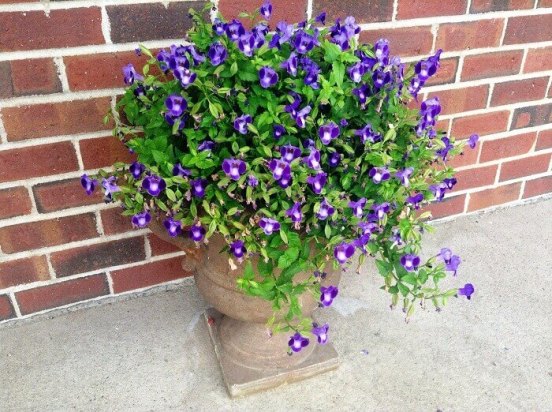
2.2 Planting and care
The tips of the shoots of young plants are regularly pinched to form a large number of lateral shoots. Withering flowers should be removed to extend the flowering period.
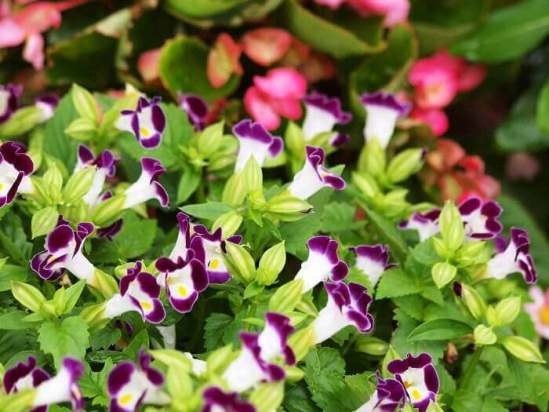

2.3 Growing conditions - temperature
The plant is kept all year round at a temperature of 18 - 22 ° C. In the winter months, the temperature in the room should not fall below 15 ° C.

2.4 Lighting
A brightly sunlit windowsill with plenty of reflected light. Direct sunlight is acceptable in the morning and evening hours. During the day, the plant needs shading.
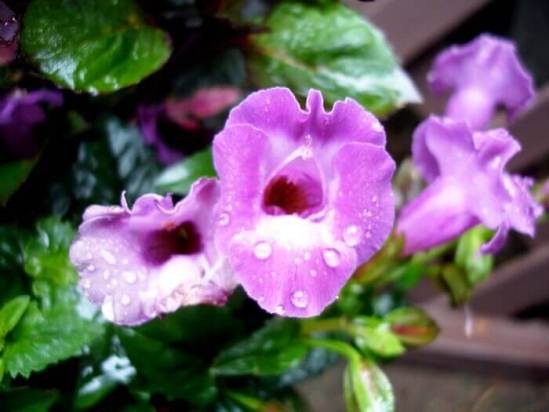
2.5 Soil
Water-permeable soil with a high organic content in the form of peat, leaf humus and rotted manure. It is undemanding to pH.

2.6 Fertilizer
During the growing season, feeding is carried out every 2 weeks with complex water-soluble fertilizers. Dormant plants do not feed.
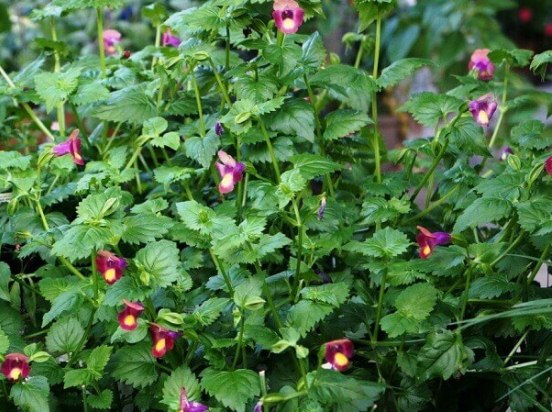
The flowering time is from June to the first frost, the flowering period is very long.
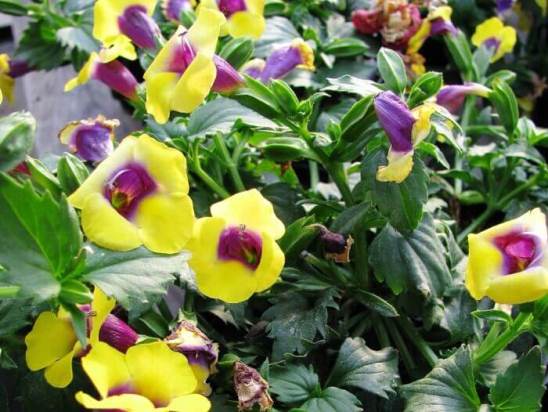
2.8 Spraying
The plant needs good air circulation, but this species does not like cold drafts. Humidity rises mainly with the onset of extreme heat or when the central heating is turned on.
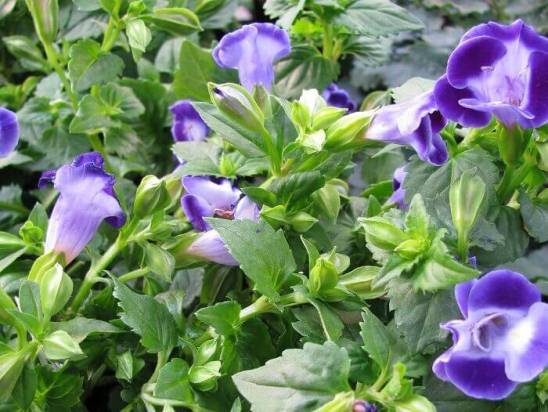
2.9 Watering
The substrate must remain evenly moist throughout the growing season. Torenia does not like drying out. In spring and summer, you can immerse the plant pot for a few minutes in a large container filled with room temperature water. In autumn and winter, the frequency of watering is slightly reduced.

2.10 Transfer
Repot only if necessary, in the spring. Torenia does not like transplants and takes a long time to recover from the slightest damage - use the transshipment. After planting, the soil around the plants is carefully tamped with your fingers so that air pockets do not form. Annual plants are discarded after flowering.
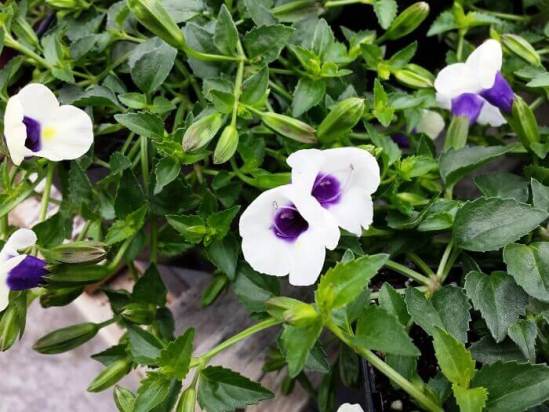
2.11 Diseases and pests of torenia
Torenia sheds leaves when the soil dries out. Powdery mildew occurs when there is poor air movement around the plant. When moisture stagnates, root rot appears.
Harmful insects - aphids, spider mites. When grown at home, slugs and snails can appear.
Insects are pests
| Insect name | Signs of infection | Control measures |
| Spider mite | Subtle spider webs on the leaves, yellowing and foliage falling off with extensive lesions. The surface of the sheet plates becomes dead and covered with small cracks. Plant development slows down. | Folk ways. Plants can be rinsed in the shower and left in the bathroom in a humid atmosphere for half an hour. Irradiation with an ultraviolet lamp every week for 2 minutes. Chemical preparations based on pyrethrum, sulfur powders, Fitoverm, Actellik. |
| Aphid | Sticky droplets appear on the leaf plates, the leaf plates curl and deform, delicate buds and young leaves wither. Insect colonies can be seen on the tops of the shoots, buds or the underside of the leaf plates. The flowers of aphid-infested plants may become deformed. | Folk methods: infusion of nettle, decoction of rhubarb leaves, wormwood, soap solution, infusion of tobacco and dandelion, onions, marigolds, yarrow, tansy, dusting with dry ash. Chemical preparations: Sulfur powders, green mass treatment with green potash soap without getting into the ground, Decis, Aktellik, Fitoverm. |
| Snails, slugs | Through holes in leaf blades, traces of mucus on the surface of the leaves. | Folk methods: manual collection of harmful insects, dusting plant leaves with mustard and hot pepper, wood ash mixed with baking soda, tobacco dust.Chemicals: superphosphate granules, copper preparations, Thunderstorm, Slime-eater, Antislice, Meta. |
-
Spider mite
-
Aphid
-
Slugs and snails
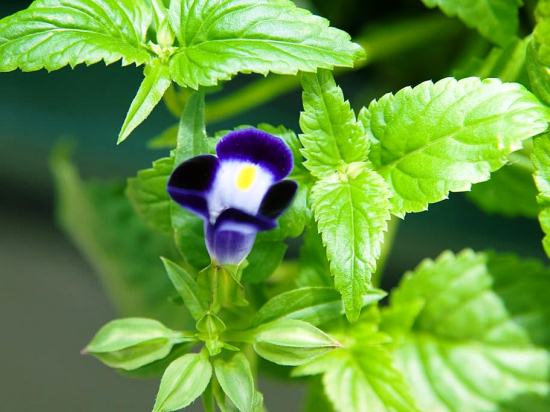
2.12 Purpose
Suitable for landscaping open areas - loggias and balconies. Looks great in hanging baskets.

Note.
Hydroponics.
Autumn sowing of seeds in open ground

It is necessary to sow seeds in the fall at the end of September - in the middle of October, so that the sprouts do not have time to break through before the cold weather. But here is a slightly different system than in the spring planting.
Dig holes, the depth of which should be about 3 cm. Place a seed in each hole, sprinkle with good, light, fertile soil, or use peat (some are planted in peat pots, which are then simply stuck into the ground). Observe the above plant spacing. After planting, the mallow does not need to be watered.
Next, you will need to cover the plantings with hay or a thick layer of fallen leaves. Seeds will sprout faster in spring than when planted in summer. And the plants, which were sown in the fall, will be stronger, as they will be hardened in winter, and when the snow melts, they will receive a lot of moisture and nutrients.


